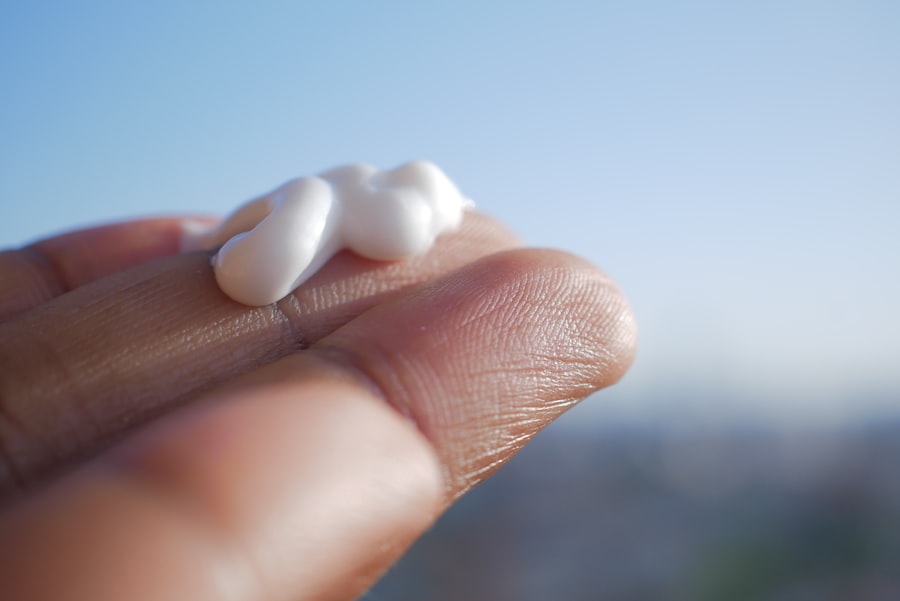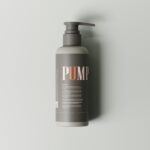Aftercare is a crucial aspect of any skincare routine, especially following treatments such as waxing, shaving, or laser hair removal. You may not realize it, but the skin is often left vulnerable after these procedures, requiring special attention to ensure it heals properly and remains healthy. Neglecting aftercare can lead to a host of issues, including irritation, inflammation, and even infection.
By prioritizing aftercare, you not only enhance the results of your treatment but also promote overall skin health. Understanding the importance of aftercare can empower you to take control of your skincare journey. When you invest time in caring for your skin post-treatment, you are actively working to minimize discomfort and prevent complications.
This proactive approach can lead to smoother, healthier skin in the long run. Moreover, aftercare can help maintain the results of your treatment, allowing you to enjoy the benefits for a more extended period. By recognizing the significance of this phase, you set yourself up for success in achieving your desired skin goals.
Key Takeaways
- Aftercare is crucial for maintaining healthy and smooth skin after hair removal treatments.
- Use gentle and soothing products to calm irritated skin after hair removal.
- Prevent ingrown hairs by exfoliating regularly and avoiding tight clothing.
- Choose products specifically designed for your skin type and the area being treated.
- Keep your skin hydrated and moisturized to promote healing and prevent dryness.
Tips for Soothing Irritated Skin
If you’ve recently undergone a hair removal treatment or experienced any form of skin irritation, soothing your skin should be your top priority. One effective way to calm irritation is by applying a cool compress to the affected area. This simple technique can help reduce redness and swelling while providing immediate relief.
You can easily create a cool compress by soaking a clean cloth in cold water and gently pressing it against your skin for several minutes. This method not only alleviates discomfort but also promotes healing. In addition to cool compresses, consider incorporating soothing ingredients into your skincare routine.
Products containing aloe vera, chamomile, or calendula can work wonders in calming irritated skin. These natural ingredients are known for their anti-inflammatory properties and can help restore your skin’s balance. When selecting products, look for those labeled as hypoallergenic and fragrance-free to minimize the risk of further irritation.
By taking these steps, you can create a nurturing environment for your skin to recover and thrive.
Preventing Ingrown Hairs
Ingrown hairs can be a frustrating and painful consequence of hair removal treatments. To prevent these pesky occurrences, it’s essential to adopt a few preventive measures. First and foremost, always ensure that you are using the correct hair removal technique for your skin type and hair texture.
For instance, if you’re shaving, make sure to use a sharp razor and shave in the direction of hair growth to minimize the risk of hairs becoming trapped beneath the skin. Another effective strategy is to keep your skin exfoliated regularly. Exfoliation helps remove dead skin cells that can clog hair follicles and lead to ingrown hairs.
You can choose between physical exfoliants, like scrubs, or chemical exfoliants containing ingredients such as salicylic acid or glycolic acid. Incorporating exfoliation into your routine two to three times a week can significantly reduce the likelihood of ingrown hairs while promoting smoother skin overall.
Choosing the Right Products
| Product | Quality | Price | Customer Reviews |
|---|---|---|---|
| Product A | High | Affordable | 4.5/5 |
| Product B | Medium | Expensive | 3.8/5 |
| Product C | Low | Affordable | 4.0/5 |
Selecting the right products for your skincare routine is essential for maintaining healthy skin, especially after hair removal treatments. When browsing through various options, pay close attention to ingredient lists and formulations. Opt for products that are specifically designed for sensitive skin or post-hair removal care.
These products often contain soothing agents that can help calm irritation and promote healing. Additionally, consider your skin type when choosing products. If you have oily or acne-prone skin, look for non-comedogenic formulas that won’t clog your pores.
On the other hand, if you have dry or sensitive skin, prioritize hydrating and nourishing products that provide essential moisture without causing further irritation. By tailoring your product selection to your unique skin needs, you can create a personalized skincare routine that supports your aftercare efforts.
Hydrating and Moisturizing
Hydration is a fundamental aspect of skincare that should never be overlooked, especially after hair removal treatments. Your skin may feel dry or tight following these procedures, making it essential to replenish moisture levels promptly.
When selecting a moisturizer, look for ingredients such as hyaluronic acid, glycerin, or ceramides that are known for their hydrating properties. These ingredients work by attracting moisture to the skin and locking it in for lasting hydration. Applying a moisturizer immediately after cleansing or treatment can maximize its effectiveness and create a protective barrier against environmental stressors.
By prioritizing hydration in your aftercare routine, you can keep your skin feeling soft, supple, and comfortable.
Exfoliating for Smooth Skin

Exfoliation plays a vital role in achieving smooth and radiant skin, particularly after hair removal treatments. By removing dead skin cells from the surface, exfoliation helps prevent clogged pores and promotes cell turnover. This process not only enhances the overall texture of your skin but also reduces the likelihood of ingrown hairs.
If you have sensitive skin, consider using gentle chemical exfoliants like alpha-hydroxy acids (AHAs) or beta-hydroxy acids (BHAs) that provide effective results without causing irritation. For those with more resilient skin types, physical exfoliants like scrubs or brushes can be beneficial as long as they are used with care.
Aim to exfoliate two to three times a week to maintain smoothness while allowing your skin time to recover between sessions.
Sun Protection
Sun protection is an often-overlooked aspect of aftercare that is crucial for maintaining healthy skin post-treatment. After hair removal procedures, your skin may be more sensitive to UV rays, increasing the risk of sunburn and pigmentation issues. To safeguard your skin from harmful sun exposure, make it a habit to apply broad-spectrum sunscreen with an SPF of at least 30 every day.
In addition to daily sunscreen application, consider wearing protective clothing and seeking shade during peak sun hours. If you’re planning outdoor activities after a treatment, reapply sunscreen every two hours or more frequently if you’re sweating or swimming. By taking these precautions seriously, you can protect your skin from damage while allowing it to heal properly.
Professional Follow-Up
Finally, don’t underestimate the value of professional follow-up care after hair removal treatments. Scheduling an appointment with a dermatologist or licensed esthetician can provide you with personalized guidance tailored to your specific needs. They can assess your skin’s condition post-treatment and recommend additional products or treatments that may enhance your results.
Moreover, professional follow-up allows you to address any concerns or complications that may arise during your recovery process. Whether you’re experiencing persistent irritation or have questions about product selection, having an expert on hand can provide peace of mind and ensure you’re on the right track toward achieving healthy skin. By prioritizing professional care as part of your aftercare routine, you set yourself up for long-term success in maintaining beautiful and radiant skin.
After undergoing laser hair removal treatment, it is crucial to follow proper aftercare at home to ensure optimal results. One helpful resource for learning about hair removal aftercare is the website In Laser Hair Removal. This site provides valuable information on how to care for your skin post-treatment, including tips on moisturizing, avoiding sun exposure, and managing any potential side effects. For more in-depth guidance on aftercare techniques, you can visit their sample page at https://www.inlaserhairremoval.com/sample-page/. If you have any specific questions or concerns about your aftercare routine, you can also reach out to the experts at In Laser Hair Removal through their contact page at https://www.inlaserhairremoval.com/contact/. By following these guidelines, you can ensure that your skin remains healthy and smooth after your laser hair removal treatment.
FAQs
What is hair removal aftercare at home?
Hair removal aftercare at home refers to the steps and practices that individuals can follow after undergoing a hair removal treatment, such as waxing, shaving, or laser hair removal, to ensure proper healing and minimize potential side effects.
Why is hair removal aftercare important?
Hair removal aftercare is important to promote healing, reduce the risk of infection, and minimize potential side effects such as redness, irritation, and ingrown hairs. It also helps to maintain the results of the hair removal treatment.
What are some common hair removal aftercare practices at home?
Common hair removal aftercare practices at home include keeping the treated area clean and dry, avoiding sun exposure, exfoliating the skin to prevent ingrown hairs, applying soothing creams or gels, and avoiding tight clothing that may cause irritation.
How long should I wait before applying products to the treated area?
It is recommended to wait at least 24 hours before applying any products to the treated area to allow the skin to heal and reduce the risk of irritation or infection.
Are there any specific products that are recommended for hair removal aftercare at home?
Soothing creams or gels containing ingredients such as aloe vera, chamomile, or tea tree oil are often recommended for hair removal aftercare at home. These products can help to calm the skin and reduce redness and irritation.
What should I do if I experience any adverse reactions after hair removal?
If you experience any adverse reactions such as severe redness, swelling, or signs of infection after hair removal, it is important to seek medical attention from a healthcare professional.






